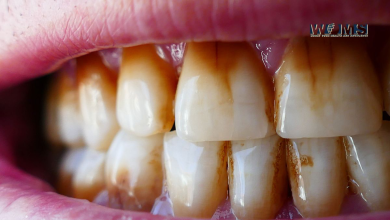10 Benefits of Aerobic Exercise: How Cardio Improves Quality of Life

Aerobic exercise, also known as cardio exercise, is a physical activity that raises the heart rate and breathing rate, which increases the body’s need for oxygen. This type of exercise is typically rhythmic and continuous, and it can include activities such as jogging, cycling, swimming, dancing, and brisk walking. Aerobic exercise is an important part of a healthy lifestyle as it can improve cardiovascular health, lung function, and overall fitness. It can also help with weight management, stress reduction, and the prevention of chronic diseases such as heart disease, diabetes, and certain types of cancer. Here are the top 10 benefits of aerobic exercise.
Improved Cardiovascular Health
Aerobic exercise can improve the health of your heart, and blood vessels. It does so by increasing heart rate. During aerobic exercise, the heart rate increases, which can help strengthen the heart muscle and improve its ability to pump blood. Regular aerobic exercise can help lower blood pressure, reducing the risk of heart disease and stroke. Aerobic exercise can improve blood flow throughout the body, which can help deliver oxygen and nutrients to the muscles and organs more efficiently. Aerobic exercise can be done at the gym or by purchasing wholesale gym equipment to set up a home gym.
Increased Endurance
Aerobic exercise can help increase endurance by improving the body’s ability to use oxygen and generate energy. Some of the ways in which aerobic exercise helps to increase endurance include Improving cardiovascular fitness through the improvement of the function of the heart and lungs, which in turn improves the body’s ability to use oxygen and generate energy. It also helps improve muscle strength and endurance, making it easier to engage in physical activity for longer periods. Regular aerobic exercise can help build stamina, allowing the body to work harder for longer periods without getting tired. Aerobic exercise can help the body use oxygen more efficiently, which can increase endurance and reduce fatigue. It also stimulates the body’s energy-producing systems, such as the mitochondria, which can increase endurance and reduce fatigue.
Weight Management
Aerobic exercise can be an effective way to manage weight. Since aerobic exercise burns calories, which can help create a calorie deficit and lead to weight loss. Regular aerobic exercise can increase metabolism, making it easier to burn calories even when not exercising. Aerobic exercise can help reduce body fat, which is important for weight management as it can lead to a decrease in overall body weight. It helps improve insulin sensitivity which can help regulate blood sugar levels and reduce the risk of developing type 2 diabetes. Aerobic exercise can help reduce appetite, making it easier to stick to a healthy eating plan and avoid overeating.
Reduced Risk Of Chronic Diseases
Regular aerobic exercise can improve cardiovascular health, lower blood pressure, and reduce the risk of heart disease. It helps reduce the risk of stroke by improving cardiovascular health and reducing inflammation in the body. It improves insulin sensitivity, which can help regulate blood sugar levels and reduce the risk of developing type 2 diabetes. Aerobic exercise can help reduce the risk of certain types of cancer, including breast, colon, lung, and prostate cancer. It can help improve respiratory function, reducing the risk of chronic lung diseases such as COPD.
Improved Mood
Aerobic exercise can improve mood by increasing the release of endorphins and other neurotransmitters and reducing stress hormones. Stress hormones are chemicals that are released by the body in response to stress, such as cortisol and adrenaline. They can have negative effects on the body if they are elevated for extended periods of time, including impairing cognitive function, suppressing the immune system, and increasing the risk of various health problems. It also helps promote feelings of accomplishment and self-efficacy.
Better Sleep
Aerobic exercise can promote better sleep by reducing the time it takes to fall asleep, increasing the amount of deep sleep, and reducing the frequency of nighttime awakenings. It may also improve sleep quality by reducing stress and anxiety, which can interfere with sleep. However, it is important to note that exercising too close to bedtime may actually have the opposite effect and disrupt sleep.
Increased Energy
Aerobic exercise can increase energy by improving cardiovascular function, increasing the flow of oxygen and nutrients to the muscles, and boosting the production of energy-boosting mitochondria. It can also reduce fatigue and improve mood, both of which can contribute to increased feelings of energy and motivation. Additionally, regular aerobic exercise can lead to improvements in overall physical fitness, which can translate to more energy and stamina throughout the day.
Improved Brain Function
Aerobic exercise can improve brain function by increasing blood flow and oxygen delivery to the brain, promoting the growth of new brain cells and neural connections, and increasing the production of chemicals such as BDNF which are important for learning and memory. Exercise has been shown to improve cognitive function in a variety of ways, including enhancing attention, working memory, and cognitive flexibility. It may also protect against age-related cognitive decline and reduce the risk of developing neurodegenerative diseases.
Stronger Bones
Anaerobic exercise can help to strengthen bones by stimulating the formation of new bone tissue and improving bone density. Weight-bearing activities such as weightlifting, resistance training, and high-intensity interval training can place stress on the bones, which signals the body to increase bone density and strength in response. This can help to reduce the risk of osteoporosis and fractures, particularly in older adults. However, it is important to perform these activities safely and under proper guidance to avoid injury.
Anaerobic exercise can create social connections by providing opportunities to participate in group fitness classes, sports teams, or gym communities. These environments can facilitate social interaction and provide a sense of belonging and support, which can contribute to improved mental health and well-being. Group exercise can also provide a source of motivation and accountability, as individuals can encourage and challenge each other to reach their fitness goals.
In Summary
the advantages of anaerobic exercise are numerous. to safely benefit from it, ensure you observe some precautions such as starting gradually and increasing intensity over time to avoid injury and overexertion. Ensure you warm up and cool down before and after exercise to prevent injury. Stay hydrated by drinking plenty of fluids before, during, and after exercise. Wear appropriate shoes and clothing to prevent injury and maximize comfort. Listen to your body and take breaks or rest as needed and lastly, talk to a doctor before starting a new exercise program.




